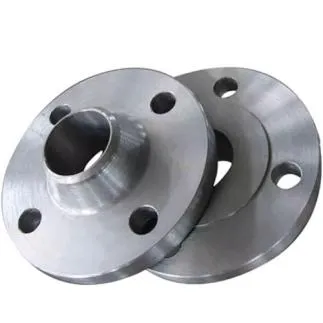-
Cangzhou Yulong Steel Co., Ltd.
-
Phone:
+86 13303177267 -
Email:
admin@ylsteelfittings.com
- English
- Arabic
- Italian
- Spanish
- Portuguese
- German
- kazakh
- Persian
- Greek
- French
- Russian
- Polish
- Thai
- Indonesian
- Vietnamese
- Zulu
- Korean
- Uzbek
- Hindi
- Serbian
- Malay
- Ukrainian
- Gujarati
- Haitian Creole
- hausa
- hawaiian
- Hebrew
- Miao
- Hungarian
- Icelandic
- igbo
- irish
- Japanese
- Javanese
- Kannada
- Khmer
- Rwandese
- Afrikaans
- Albanian
- Amharic
- Armenian
- Azerbaijani
- Basque
- Belarusian
- Bengali
- Bosnian
- Bulgarian
- Catalan
- Cebuano
- China
- China (Taiwan)
- Corsican
- Croatian
- Czech
- Danish
- Esperanto
- Estonian
- Finnish
- Frisian
- Galician
- Georgian
- Kurdish
- Kyrgyz
- Lao
- Latin
- Latvian
- Lithuanian
- Luxembourgish
- Macedonian
- Malgashi
- Malayalam
- Maltese
- Maori
- Marathi
- Mongolian
- Myanmar
- Nepali
- Norwegian
- Norwegian
- Occitan
- Pashto
- Dutch
- Punjabi
- Romanian
- Samoan
- Scottish Gaelic
- Sesotho
- Shona
- Sindhi
- Sinhala
- Slovak
- Slovenian
- Somali
- Sundanese
- Swahili
- Swedish
- Tagalog
- Tajik
- Tamil
- Tatar
- Telugu
- Turkish
- Turkmen
- Urdu
- Uighur
- Welsh
- Bantu
- Yiddish
- Yoruba

Dec . 11, 2024 20:09 Back to list
api5lx52 specification
Understanding the API 5LX52 Specification
The API 5LX52 specification is a crucial guideline in the oil and gas industry, specifically concerning the manufacture of line pipe used for the transportation of natural gas, water, and petroleum products. This specification is part of the broader API 5L standard developed by the American Petroleum Institute (API), which provides the essential technical requirements for the steel pipes used in various applications related to the petroleum and natural gas industries.
Historical Context and Purpose
The API 5L specification was first established in 1927 and has since evolved to meet the changing needs of the industry and advancements in technology. The designation X52 refers to both the minimum yield strength of the pipe and its specific grading. The X indicates that the yield strength is 52,000 psi (pounds per square inch), making it suitable for applications requiring high strength and durability. The primary purpose of API 5LX52 is to ensure the safe and efficient transport of liquids and gases over long distances while minimizing the risk of failure.
Material Requirements
One of the essential aspects of the API 5LX52 specification is its material requirements. The steel used in X52 pipes is typically produced through a combination of flat steel and a further manufacturing process, often involving a combination of electric arc furnace (EAF) and ladle metallurgy. The specification also sets forth strict controls on chemical composition, mechanical properties, and the testing methods required to ensure the integrity of the pipes.
In terms of chemical composition, API 5LX52 pipes must contain specific percentages of carbon, manganese, phosphorus, sulfur, silicon, and other elements to enhance their mechanical strength and resistance to corrosion. The specification often calls for a minimum yield strength, tensile strength, and elongation requirements, all of which are crucial for assessing the pipe's performance under varied conditions.
Manufacturing Process and Testing
api5lx52 specification

The manufacturing process of API 5LX52 pipes involves various methods, including seamless and welded pipe production. Each method has its own set of advantages and suitability for different applications. For instance, seamless pipes are generally favored for high-pressure applications due to their superior strength and integrity, while welded pipes may be more cost-effective for lower-pressure settings.
Testing is a critical component of the production process. API 5LX52 requires comprehensive inspection and testing protocols to validate the pipes’ quality. These tests may include non-destructive testing (NDT) methods like ultrasonic testing and radiographic testing. The goal is to identify any imperfections in the pipe before it is put into service, thus ensuring the safety and reliability of the pipeline infrastructure.
Applications in the Industry
API 5LX52 pipes are predominantly used in the oil and gas sector but are also applicable in other industries such as water distribution and construction. The robust nature of X52 pipes allows them to efficiently handle the high-pressure scenarios often encountered in these sectors. Additionally, the corrosion-resistant properties of the steel ensure longevity and reduce maintenance costs.
Pipelines constructed using API 5LX52 steel are designed to withstand harsh environmental conditions and high flow rates, making them vital for transporting hydrocarbons from production fields to processing facilities and ultimately, to end consumers. The standard also aligns with international safety and environmental regulations, promoting sustainable practices in pipeline construction.
Conclusion
The API 5LX52 specification stands as a testament to the rigorous standards aimed at ensuring the quality and reliability of pipes used in the critical infrastructure of the oil and gas industry. Through its stringent material requirements, detailed manufacturing processes, and comprehensive testing procedures, it contributes to safe operations and supports the industry's objectives of efficiency and sustainability. As the energy sector continues to evolve, the importance of adhering to such specifications remains paramount, ensuring the safe and effective transportation of vital resources across the globe.
Latest news
-
ANSI 150P SS304 SO FLANGE
NewsFeb.14,2025
-
ASTM A333GR6 STEEL PIPE
NewsJan.20,2025
-
ANSI B16.5 WELDING NECK FLANGE
NewsJan.15,2026
-
ANSI B16.5 SLIP-ON FLANGE
NewsApr.19,2024
-
SABS 1123 FLANGE
NewsJan.15,2025
-
DIN86044 PLATE FLANGE
NewsApr.19,2024
-
DIN2527 BLIND FLANGE
NewsApr.12,2024
-
JIS B2311 Butt-Welding Fittings LR/SR 45°/90° /180°Seamless/Weld
NewsApr.23,2024











